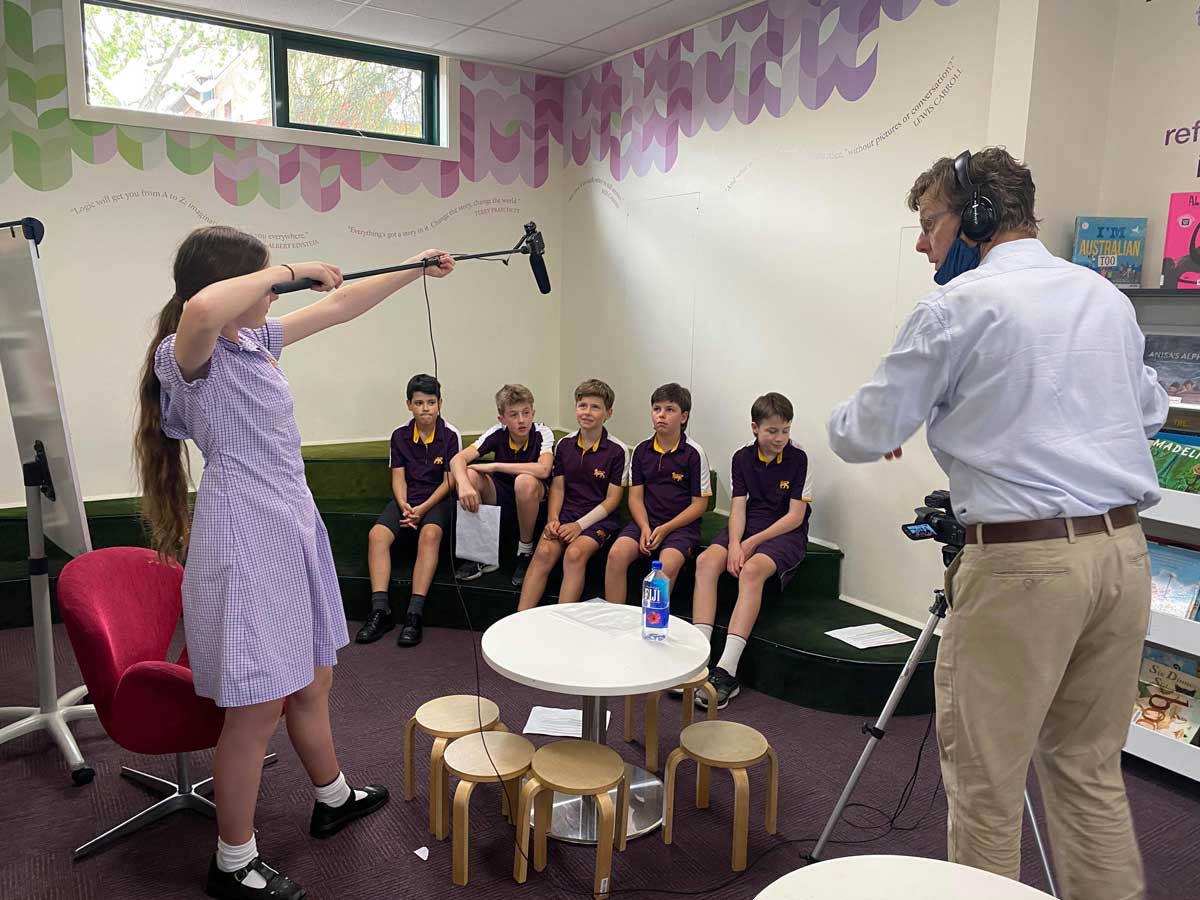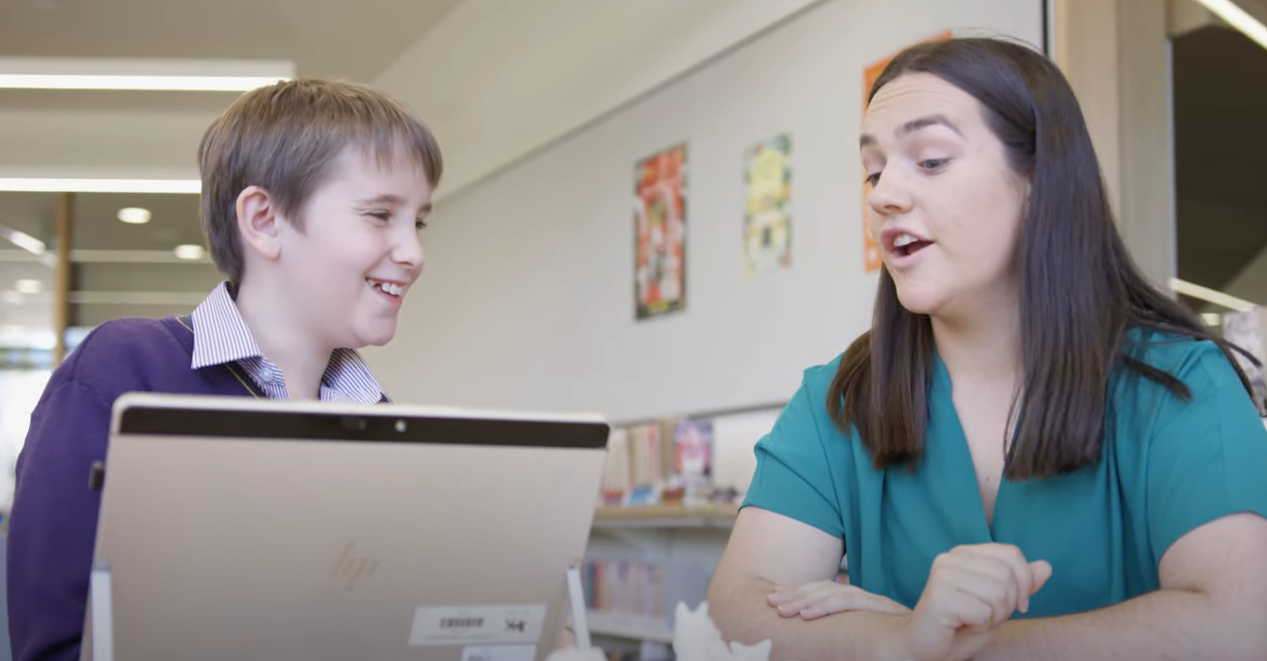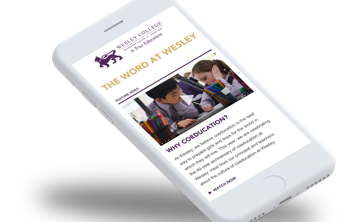
The Primary Years Program involves students in real-world learning to address real-world problems, and, as Emily Watson explains, sets them up for success as they transition into Year 7.
The culmination of the International Baccalaureate Primary Years Program (PYP) is the Year 6 PYP Exhibition, which gives every student the chance to demonstrate not only how much they have learned through the program but also how that learning informs effective action to address real-world problems.
Tackling real-world issues
Working in small groups, students undertake an extended, in-depth, collaborative project, tackling a real-world problem that’s important to them in ways that make a real difference. Presenting their work at the PYP Exhibition, students are able to demonstrate and share what they have learned about, but also – importantly – what they have done to address, that issue or problem with the wider-school community.
In 2020, students shared their work virtually via Microsoft Teams as well as face-to-face presentations at school. They explored and took measures to address food security, family violence, animal protection, digitalised communication for children with cerebral palsy, refugee welfare and how LGBTQIA+ pride actions promote social equality and inclusion.
The PYP Exhibition does more than demonstrate students’ understanding; it celebrates their IB learner profile attributes as:
- inquirers who nurture their curiosity and develop investigation and research skills
- knowledgeable learners who explore concepts, ideas and issues that have both local and global significance
- thinkers who use critical and creative thinking to address complex problems
- communicators who convey information and ideas creatively and in multiple ways
- principled learners who use their skills and knowledge to act ethically
- open-minded learners who are interested in and open to the perspectives, values, customs, histories and traditions of other people and communities
- caring learners who are empathetic, compassionate and respectful of others
- risk-takers who face uncertainty and new experiences with forethought and determination
- learners who understand the importance of balancing intellectual, physical and emotional elements in order to achieve personal, community and global wellbeing, and
- reflective learners who assess and recognise their own strengths and weaknesses and use this self-awareness to inform their ongoing learning and personal development.
Beyond that, it also provides us and all our students with a wonderful opportunity to celebrate their transition to the next phase of their education – and sets them up for future success.
What do Year 6 students say?
As Indiana Shannon explains,those attributes are both instrumental to the collaborative work students have put into the Year 6 exhibition and demonstrated by the exhibition. ‘Our theme for this year, “Choose to care, fight for fair,” really captures the essence of the learner profile attributes that have helped us through our PYP years, especially being open-minded and caring,’ Indiana said. ‘Being open-minded has helped me to try new things through my PYP journey, weigh my options, take risks with my learning and think about issues from different perspectives. Being caring has been really important to me as a life skill.’
Josh Merrick’s PYP journey started when he was just three years old in ECLC, learning the difference between purple and gold. ‘The most important skills I’ve gained are organisation and communication skills,’ Josh explained. ‘Time management, collaborating and taking responsibility for our different roles were crucial. My group addressed puppy farming. We made dog biscuits to raise money for Oscar’s Law Foundation, which required a lot of organisation; and we spoke with volunteers at Oscar’s Law and made our own investigations into current legislation so we could advocate for change, which required good communication skills.’
As Ben Summers explains, the PYP journey from Prep to Year 6 enables students to develop their knowledge and skills but also crucial attributes like critical and creative thinking and collaboration. ‘I’ve learnt that to collaborate well, you need to share ideas, listen to others’ ideas and respect all members of the group,’ Ben said. ‘It’s a skill I know will come in handy throughout the rest of my years of school and beyond.’
Setting students up for success
According to Year 8 student, Jack Vincent, the PYP and Year 6 exhibition develop enduring skills and mindsets. ‘The Year 6 exhibition helps students develop as open-minded learners. It also taught me the importance of communication,’ Jack said. ‘It was vital that everyone’s ideas were heard. Working in groups is all about being collaborative, organised and reliable, but also open minded: really understanding the ideas and skills that everyone in the group brings to the project. These are lifelong skills I use to this day.
‘Different perspectives as we researched our chosen issue and tested our solutions were invaluable. Working together is also fun and motivating. The Year 6 exhibition is designed to support us as independent learners. We had a mentor but we really had to plan and do things on our own. For instance, we had to identify how best to pitch our solution to our chosen issue. Taking matters into our own hands meant we learned a lot.’
Year 9 student, Eric Wang, says the PYP and Year 6 exhibition also fosters students’ ability to think creatively and critically. ‘Creative and critical thinking are two essential skills, not only for studies in the Middle Years Program (MYP) or the VCE or IB Diploma Program, but also as an effective and ethical member of society,’ Eric said. ‘The process of collaborating as 12-year-olds was sometimes bumpy, but we did more than learn about tolerance and flexibility: we also understood that tolerance and flexibility generate great outcomes. The exhibition was also a personal milestone for me; it gave me the confidence to trust in my own creative ideas and share them with my peers and mentors. It prepared me as an independent learner so I can thrive in the MYP and beyond.’
Emily Watson is PYP Head of Learning – Science, Technology and Social Studies at Wesley’s Elsternwick Campus.

